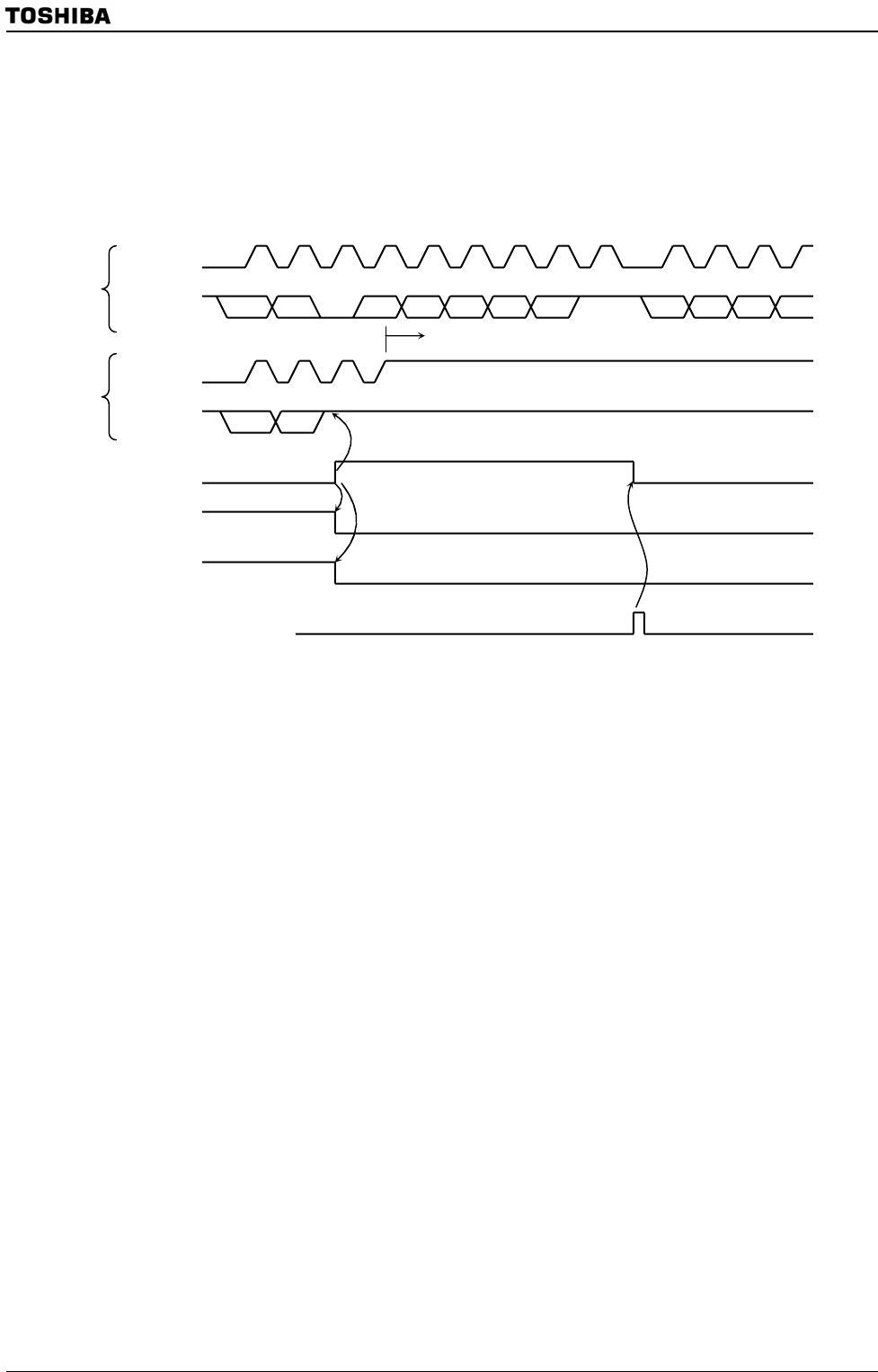
TMP92CZ26A
92CZ26A-355
lost and SBISR<AL> is set to “1”.
When SBISR<AL> is set to “1”, SBISR<MST, TRX> are cleared to “00” and the mode is
switched to Slave Receiver Mode. Thus, clock output is stopped in data transfer after
setting <AL>=“1”.
SBISR<AL> is cleared to “0” when data is written to or read from SBIDBR or when
data is written to SBICR2.
Figure 3.15.13 Example of when TMP92CZ26A is a master device B
(D7A = D7B, D6A = D6B)
(11) Slave address match detection monitor
SBISR<AAS> is set to “1” in Slave Mode, in Address Recognition Mode (i.e. when
I2CAR<ALS> = “0”), when a GENERAL CALL is received, or when a slave address
matches the value set in I2CAR. When I2CAR<ALS> = “1”, SBISR<AAS> is set to “1”
after the first word of data has been received. SBISR<AAS> is cleared to “0” when
data is written to or read from the data buffer register SBIDBR.
(12) GENERAL CALL detection monitor
SBISR<AD0> is set to “1” in Slave Mode, when a GENERAL CALL is received (all
8-bit received data is “0”, after a start condition). SBISR<AD0> is cleared to “0” when
a start condition or stop condition is detected on the bus.
(13) Last received bit monitor
The SDA line value stored at the rising edge of the SCL line is set to the
SBISR<LRB>. In the acknowledge mode, immediately after an INTSBI interrupt
request is generated, an acknowledge signal is read by reading the contents of the
SBISR<LRB>.
<AL>
<MST>
<TRX>
S
t
op
th
e
c
l
oc
k
pu
l
se
1
Keep Internal SDA output to high-level as losing arbitration
A
ccessed to
SBIDBR or SBICR2
Internal
SDA out
p
ut
Internal
SCL output
Master
A
Master
B
2 3456789 1 2 3 4
D7A
D6B
D4A D3A D2A D1A D0A D7A’ D6A’ D5A’ D4A’
1 2 3 4
D7B
D6A
Internal
SDA out
p
ut
Internal
SCL output
D5A


















